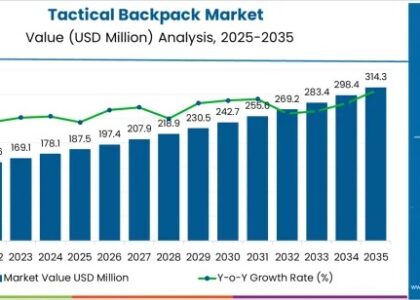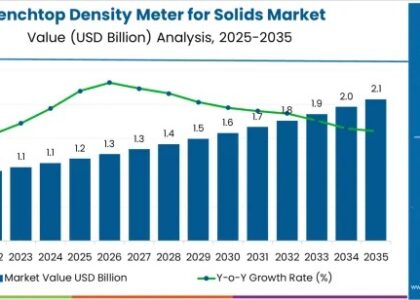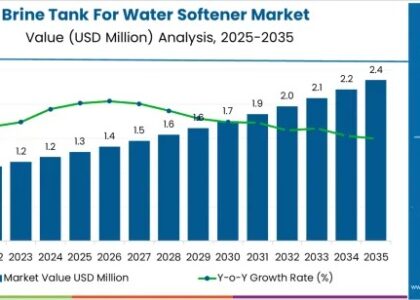Introduction
The Plastic Dielectric Films Market is a dynamic industry with a promising future. In this comprehensive article, we will delve into various aspects of this market, shedding light on its growth, applications, and the factors driving its success. As we explore this exciting domain, we aim to provide you with expert insights, credible sources, and a well-rounded understanding of the Plastic Dielectric Films industry.
The Plastic Dielectric Films Market: An Overview
Plastic Dielectric Films Market is a thriving industry that continues to gain momentum. Let’s take a closer look at what makes it so significant.
The Market is a dynamic and fast-growing sector within the broader plastics industry. These films play a vital role in various applications, from capacitors to packaging, owing to their unique properties and versatility. As the demand for electronic devices, renewable energy systems, and sustainable packaging solutions increases, the Plastic Dielectric Films Industry has witnessed remarkable growth.
The plastic dielectric films market is currently valued at approximately US$ 1,192.2 million in 2023, and it is expected to witness steady growth with a Compound Annual Growth Rate (CAGR) of 4.1%, ultimately reaching a market valuation of US$ 1,748.98 million by 2033.
Europe’s plastic dielectric films industry was worth US$ 134,036 million in 2022. One of the factors driving the market growth in Europe is the increasing adoption of electric vehicles and renewable energy systems. Plastic dielectric films are widely used in electric vehicle batteries and solar power systems to store and release energy. The European Union’s ambitious renewable energy targets and regulations have resulted in a higher demand for plastic dielectric films in the region.
Get our Sample Report to discover how recent industry developments, like: https://www.futuremarketinsights.com/reports/sample/rep-gb-7562
Market Drivers-
- Electronics and Electrical Equipment Demand: The growing demand for electronic components, devices, and equipment in consumer electronics, automotive, telecommunications, and industrial sectors is a major driver for the plastic dielectric films market. These films are essential for insulating and protecting electronic components.
- Miniaturization Trends: The trend toward smaller and more compact electronic devices requires thinner and more flexible dielectric films. This demand for miniaturization is boosting the market for plastic dielectric films.
- Renewable Energy: The renewable energy sector, including solar panels and wind turbines, relies on plastic dielectric films for insulation and protection against harsh environmental conditions. As the renewable energy industry expands, so does the demand for these films.
- Advancements in Energy Storage: Energy storage systems, such as lithium-ion batteries and supercapacitors, rely on dielectric films for their insulation properties. The growing need for efficient and high-capacity energy storage is driving the market for plastic dielectric films.
- Green Technologies: As sustainability becomes a global priority, plastic dielectric films are sought after for their role in making energy-efficient and eco-friendly products. These films help in reducing energy consumption and environmental impact.
- Increasing Use in Automotive: The automotive industry is integrating more electronic components and advanced electrical systems in vehicles. Plastic dielectric films are used in these systems for insulation, contributing to the market’s growth.
Key players-
- Treofan Group,
- Toray Plastics (America) Inc.,
- Bollore Group,
- Steiner GmbH & CO. KG,
- DuPont Teijin Films,
- Mitsui Chemicals, Inc.,
- Kopafilm Elektrofolien GmbH,
- Tervakoski Films Group,
- Birkelbach Kondensatortechnik GmbH,
- Shin-etsu Film Company Limited,
- Sungmoon Electronics Co. Ltd.,
- Wenling Wanbao Capacitor Factory (Taizhou Yongji Electronics Co., Ltd.),
- PPI Adhesive Products (C.E.) S.r.o.,
- Tricor Packaging, Arcwise Packaging, Inc., and
- Xpro India Limited.
Excellent properties of plastic dielectric films make them suitable for use in a wide range of applications in AC and DC systems, and high current DC applications. Sales of DC film capacitors are expected to grow at a robust CAGR, upheld by consumer demand for Audio & Video, along with the need for innovative capacitor solutions for IoT-based devices and handled devices.
For instance, in 2022, Toray Industries, Inc. announced the launch of a new range of polypropylene dielectric films that offer improved performance and reliability for high-temperature applications. Similarly, DuPont Teijin Films introduced a new range of polyethylene terephthalate (PET) films that offer high clarity and dimensional stability.
In addition, players are also focusing on strategic partnerships and collaborations to expand their market presence and improve their product offerings.
- In July 2020, KEMET, a prominent provider of electrical components, announced three series of PP capacitor films: C44U-M, C44P-R, and R75H. These devices were created with high-power conversion software systems in mind, including industrial, renewable energy, and power storage.
- SKC, Inc. partnered with a leading electronics company to develop innovative plastic dielectric films for use in electronic applications.
Market Restraints-
- Price Volatility of Raw Materials: The cost of raw materials used in plastic dielectric films, such as polymers, can be subject to price fluctuations. This volatility can impact production costs and profit margins.
- Environmental Concerns: While plastic dielectric films offer excellent electrical properties, they are often made from non-biodegradable materials. This raises environmental concerns, particularly in the context of sustainability and waste management.
- Competitive Market: The market for plastic dielectric films is highly competitive with numerous manufacturers and suppliers. This competition can lead to pricing pressures and reduced profitability.
- Technical Challenges: Developing plastic dielectric films with the right combination of electrical properties, flexibility, and durability can be technically challenging. Meeting the specific requirements of different industries can pose difficulties.
- Regulatory Compliance: Compliance with environmental regulations and safety standards can be demanding for manufacturers of plastic dielectric films. Adhering to ever-evolving regulations can be costly and time-consuming.
- Limited Temperature Tolerance: Plastic dielectric films may have limitations in terms of their ability to withstand extremely high or low temperatures. This restricts their use in applications requiring such tolerance.
Get Expert Insights Now! Contact our Analyst for In-depth Market Analysis and Strategic Recommendations : https://www.futuremarketinsights.com/askus/rep-gb-7562
Key Segments Of Plastic Dielectric Films Industry Survey
By Product :
- PTEF
- PEN
- PET
- PP
- PPS
- PVDF
By Application :
- Electrical & Electronics
- Automobiles
- Solar & Wind Energy Systems
By End Use :
- Electronics
- Automotive
By Region :
- North America
- Latin America
- Europe
- East Asia
- South Asia & Pacific
- Middle East & Africa (MEA)
About Future Market Insights (FMI)
Future Market Insights, Inc. (ESOMAR certified, recipient of the Stevie Award, and a member of the Greater New York Chamber of Commerce) offers profound insights into the driving factors that are boosting demand in the market. FMI stands as the leading global provider of market intelligence, advisory services, consulting, and events for the Packaging, Food and Beverage, Consumer, Technology, Healthcare, Industrial, and Chemicals markets. With a vast team of over 5000 analysts worldwide, FMI provides global, regional, and local expertise on diverse domains and industry trends across more than 110 countries.
Contact Us:
Future Market Insights Inc.
Christiana Corporate, 200 Continental Drive,
Suite 401, Newark, Delaware – 19713, USA
T: +1-845-579-5705
For Sales Enquiries: sales@futuremarketinsights.com
Website: https://www.futuremarketinsights.com
LinkedIn| Twitter| Blogs | YouTube






